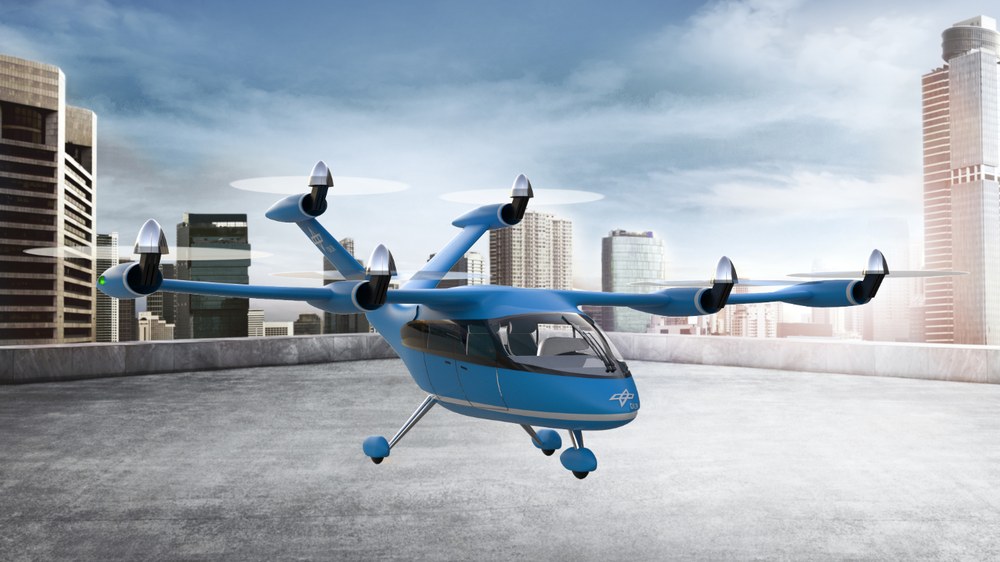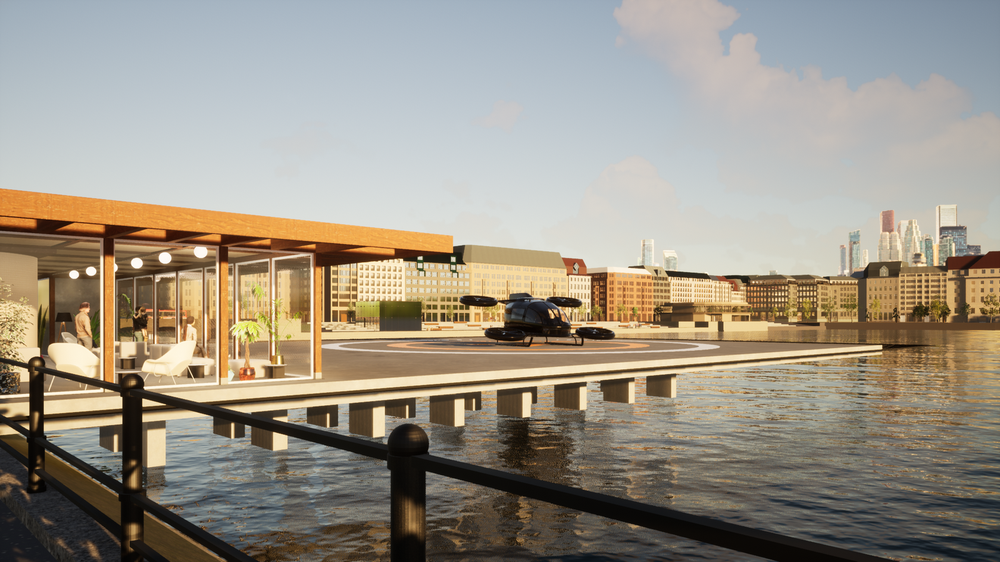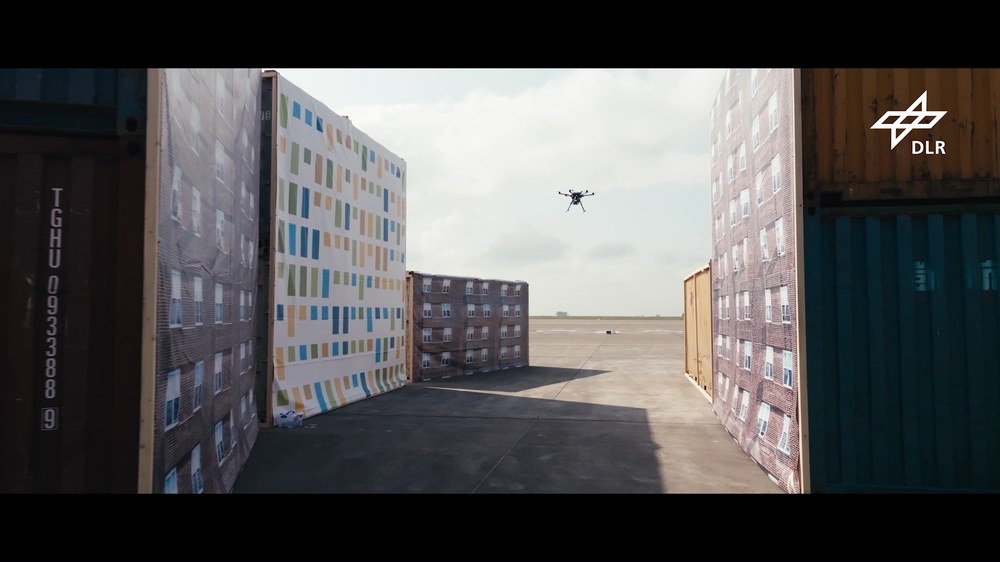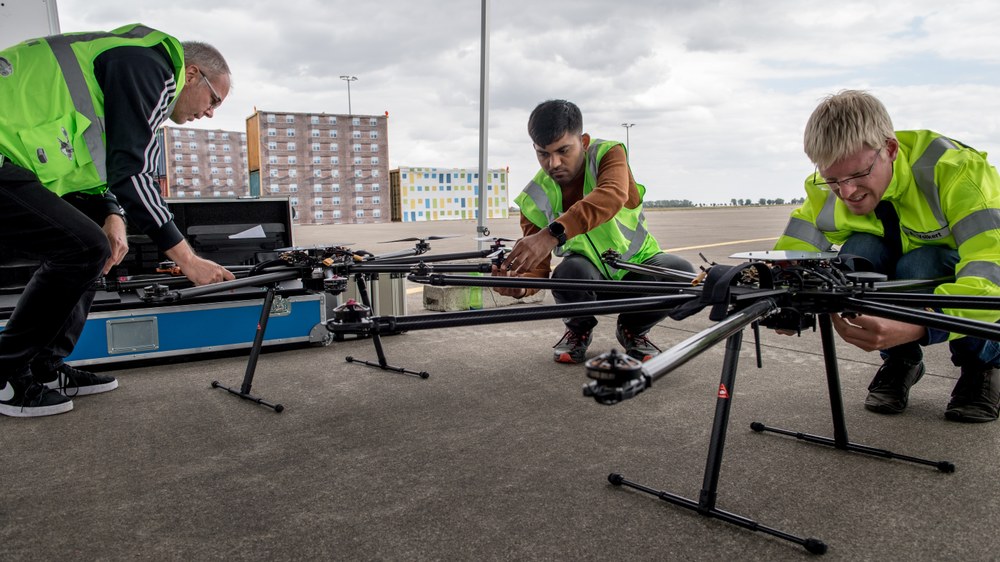Outlook for urban air transport



- Numerous stops and affordable prices important for demand for air taxi transport services.
- Price range of four to eight euros per kilometre necessary for profitable operation.
- Air taxi concept with six swivelling rotors for four passengers and a range of up to 100 kilometres presented.
- Air taxi scenario for Hamburg tested on a 1:4 scale at DLR's Cochstedt site.
- Focus: Aeronautics, urban air mobility, uncrewed flight
Drones and highly automated air taxis have the potential to enrich urban air transport with new possibilities. But what requirements must be met so that airborne urban mobility can be used in a few years? What demands on safety, efficiency, sustainability and affordability must be met to make these concepts feasible? In the HorizonUAM (Urban Air Mobility) research project, the German Aerospace Center (Deutsches Zentrum für Luft- und Raumfahrt; DLR) has sought answers to these questions with concepts for aircraft, flight corridors and stopping points ('vertidromes') that integrate into the existing infrastructure. The results are being presented to the public on 4 and 5 July 2023 at DLR's National Experimental Test Center for Unmanned Aircraft Systems at the Cochstedt site. Here, the project's central flight tests took place in a model city. Specific examples for the development of urban air transport were designed for the city of Hamburg. Feedback from citizens on the possible use of urban air transport was incorporated into the research.
"Future urban air transport places a wide range of demands on safe and efficient operations with suitable take-off and landing sites and flight routes that carefully integrate into the existing infrastructure and the everyday lives of local people," says Anke Kaysser-Pyzalla, Chair of the DLR Executive Board. "To achieve this, we need a whole-system approach to research and development, which is addressed by the DLR HorizonUAM project. A total of 10 participating institutes and facilities demonstrate DLR's overall system expertise in this important emerging sector for urban mobility and the economy."

Video: DLR project HorizonUAM investigates outlook for air taxi traffic
Your consent to the storage of data ('cookies') is required for the playback of this video on Quickchannel.com. You can view and change your current data storage settings at any time under privacy.
The entire system under observation
In order to get the full picture, the researchers developed an overall system simulation as well as a methodology for forecasting the global demand for UAM transport services. They applied this methodology to 990 urban areas with more than 500,000 inhabitants worldwide. "The results show that demand clearly increases with an increasing number of stops and their easy accessibility," reports Bianca Schuchardt from the DLR Institute of Flight Guidance and HorizonUAM Project Manager. "Affordable prices play a crucial role in this." Using the methodology, the scientists identified more than 200 cities worldwide as 'UAM-suitable'. In addition to large cities such as New York and Tokyo, Hamburg is also among them. Important factors are, for instance, the size of the population, the extent of the city and the gross domestic product.
The researchers also took a close look at the costs. For this purpose, they developed and examined various application scenarios: urban air taxi traffic, airport shuttles and regional traffic. The result – in order to cover the operating costs and at the same time make a profit, operators of air taxis and shuttle services would have to charge prices ranging from four to eight euros per kilometre, depending on the circumstances.
Vertical take-off air taxis
What should a vehicle that enables people to be transported from A to B in urban airspace ideally look like? The researchers in the HorizonUAM project also looked into this question. "We made several preliminary designs for vertical take-off air taxis. For one of the concepts with six swivelling rotors, we also produced a detailed cabin design, which we optimised for UAM operation in terms of safety, passenger comfort and operational procedures," explains Schuchardt. In a newly built cabin simulator at the DLR site in Braunschweig, 30 test participants experienced a flight in an air taxi using mixed reality. The test participants were very open to a remote-controlled air taxi flight without a pilot on board. However, in the case of unexpected events, such as a change of route, the perceived sense of well-being tended to increase when a crew member was on board.
Always safe on the move
Safe, reliable and largely autonomous – this is what the air taxi of the future should look like. The researchers also investigated how it could be operated and monitored safely from a distance and how certification for these aircraft would have to proceed. It quickly became apparent that two major challenges of manned and unmanned aviation come together for air taxis – the desire to achieve autonomy similar to that of unmanned aviation and the desire for the same high safety standards as in manned aviation. "We were able to successfully demonstrate the certifiability of air taxi components such as the battery system. For the much more complex certification of autonomy functions, we have developed partial solutions, but there is still a need for research in this area," explains Schuchardt.
Stops for air taxis
If air taxis are to be used in urban areas at all, they need stopping points – that is, small urban airfields, known as vertidromes. These must be able to be integrated into the existing urban infrastructure and the relevant cityscape. In this context, the researchers built a model city on a scale of 1:4 at the DLR site in Cochstedt, in which they also investigated the management of a vertidrome. Schuchardt reports: "In the model city, we were able to test an air taxi scenario for Hamburg as a prime example. This involved an air link between Hamburg Airport and a vertidrome positioned in the Binnenalster. The simulated flight route through Hamburg could be conveniently arranged along the existing S-Bahn rail line. However, sensitive areas or those with higher air traffic volumes, such as around the Hamburg hospital, were omitted.
Perception and public acceptance
Urban air transport cannot be implemented without broad public acceptance. For this reason, the researchers conducted several studies to gather feedback from citizens. They commissioned the Institute BIK ASCHPURWIS + BEHRENS GmbH to conduct a large-scale telephone survey on the acceptance of civilian drones and air taxis among the German population. These results were then analysed by the researchers and a wide range of opinions emerged. For civilian drones, there was a general tendency towards a rather positive opinion, while for air taxis, the respondents were more sceptical.
The views of local residents were assessed in another study. This involved the use of virtual reality technology to give participants an impression of what it feels like to be a pedestrian in a city where civilian drones are flying. In addition, the researchers developed an app that not only measures the background noise of drones, but also allows the user to make their own evaluations.
The example of Hamburg
To visualise the work carried out in HorizonUAM, the scientists created 3D renderings that show how they envision vertidrome concepts. Hamburg, the 'traffic jam capital', was particularly suitable as a reference city for various studies in HorizonUAM. “In Hamburg, we placed a vertidrome with a single landing pad, known as a vertistop, in the Binnenalster for this purpose," Schuchardt reports. "We designed a vertidrome with several pads for take-off and landing – vertiports – for Hamburg Airport," Schuchardt continues. Integration at the airport was a particular challenge, as the air taxis must not come too close to conventional air traffic. In fast-time simulations, as many as 20 different positions for vertidromes were examined within Hamburg. In 24 hours, 2800 flights with a total of 275 air taxis could be completed.

In addition, researchers defined arrival and departure flight manoeuvres and routes for air taxis within Hamburg. These were analysed in fast-time simulations and then tested in several scenarios together with air traffic controllers in a control tower simulator. This involved investigating how air traffic control at Hamburg Airport could manage manned and unmanned air traffic together. The defined procedures have proven to be successful, but they also showed the increasing workload of the controllers with additional airspace users.
The flight tests within the HorizonUAM project took place at the National Experimental Test Center for Unmanned Aircraft Systems at DLR's Cochstedt site. Here, the scientists also worked using Hamburg as an experimental scenario. Several multicopters represented air taxis that moved between Hamburg Airport and the vertidrome on the Binnenalster lake, flying over a residential area at a scale of 1:4. The researchers showed methods of airspace integration using U-space services, and demonstrated the processes of a vertiport manager. They also tested the use and safeguarding of artificial intelligence using the example of automatic person detection via onboard camera images. In addition, the model city served to validate algorithms for secure communications and navigation in urban areas.
Expanding topics and research infrastructure
After the completion of the HorizonUAM project, a follow-up project is already being planned. In this project, the work on overall systems simulation will be continued. The model city is also to be further developed and expanded to include infrastructure for a vertidrome simulator. The remote guidance of several air taxis in a control centre will be tested. The researchers also want to expand the consortium to include the topics of multimodality and energy management.
The participating institutes
A total of ten institutes and facilities have collaborated in the DLR HorizonUAM project since 2020. These include the DLR Institute of Flight Guidance (as lead) and the DLR Institutes of Propulsion Technology, Flight Systems, Air Transport, Communications and Navigation, Aerospace Medicine, Atmospheric Physics, System Architectures in Aeronautics, and Maintenance, Repair and Overhaul. In addition, the National Experimental Test Center for Unmanned Aircraft Systems was used to conduct tests.
